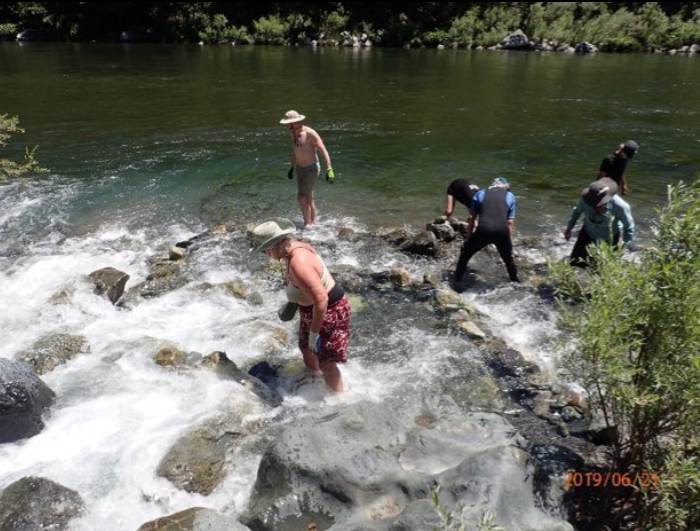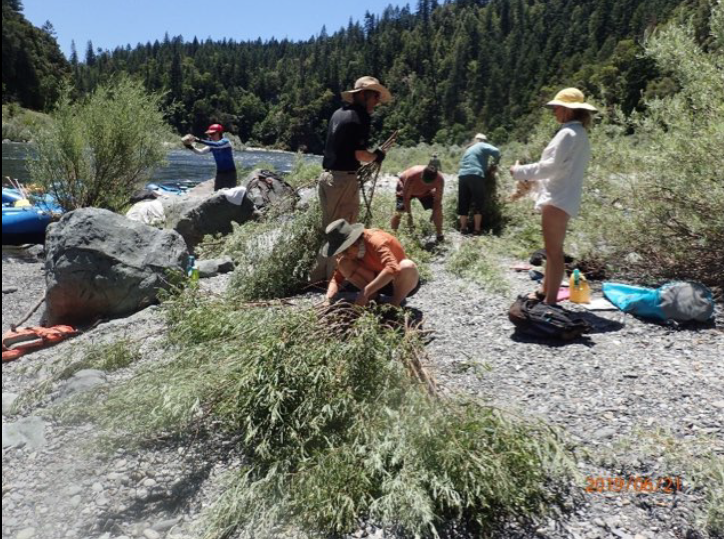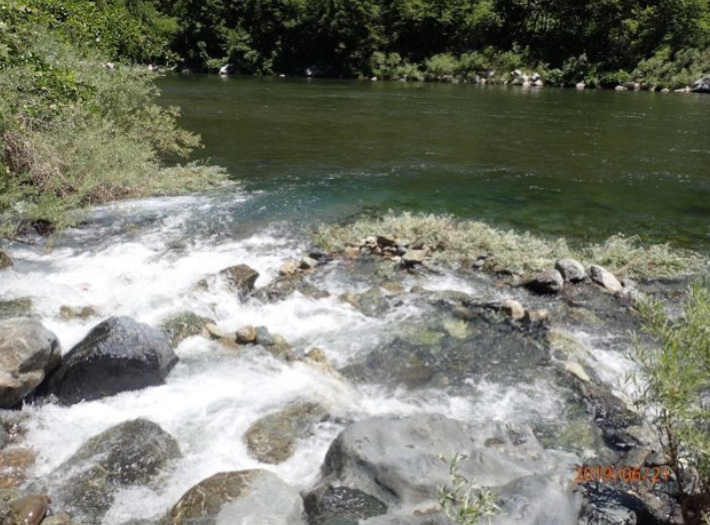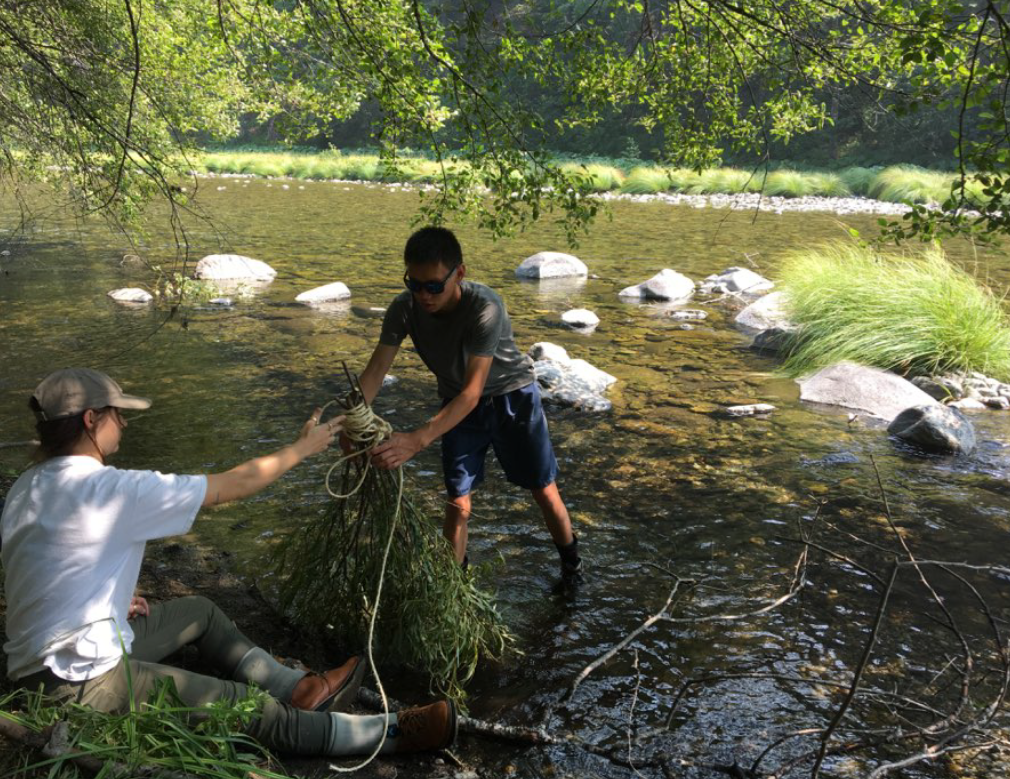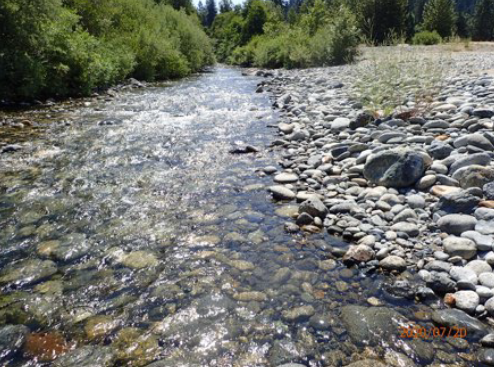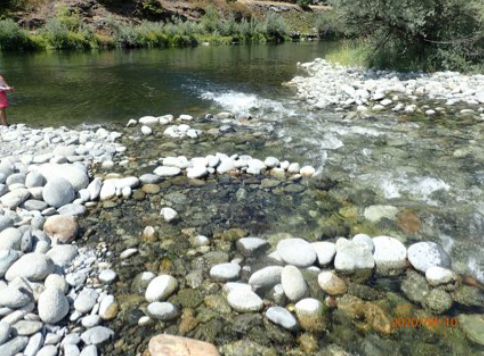Mid-Klamath Tributary Fish Passage Improvement Project
Project Lead: Salmon River Restoration Council
Location of Project: 41.377561, -123.493405
Description of Project:
Since 2001, the Salmon River Restoration Council (SRRC) and the Mid Klamath Watershed Council (MKWC) have been working together, alongside other partners, to identify and manually treat barriers to anadromous fish passage on key tributaries in the Klamath watershed. Seasonal low flow barriers into these anadromous streams will be manually reconstructed using hand tools to allow for adult and juvenile fish passage. The proposed project will improve juvenile and adult salmonid fish passage into 30 to 40 tributaries in the Klamath and Salmon River subbasins through manual modification of natural and anthropogenic barriers. This work is seasonal and is not expected nor intended to remain after annual winter flooding, but it is cost-effective and provides immediate results to the fishery.
Fish passage problems in the Klamath River watershed include human-influenced barriers, natural barriers, or a combination of both. The majority of human-caused barriers are the result of road crossings, but swimmer’s dams at popular recreation areas also pose an obstacle to fish passage. Natural barriers include aggraded stream mouths where streams will either run sub-surface or become too shallow for fish to navigate because of large alluvial deltas. This problem has been exacerbated by past upslope disturbances such as wildfires, road failures, and mining, which have increased the sediment load particularly at the mouths of these tributaries. Chronic low flow conditions increase the impact of seasonal barriers, particularly at aggraded stream mouths. Recent research in the Klamath Basin indicates that both summer and winter refugia associated with the lower reaches of tributaries are critical for the survival of juvenile salmonids. Fisheries surveys have identified consistently high numbers of juvenile salmonids in habitats that function both as summer and winter refugia. The size, distribution, accessibility, and quality of these habitats throughout the year are a major limiting factor for juvenile salmonids in the Klamath River basin. Fish passage improvement at coldwater tributaries will improve the function and capacity of thermal refugia during drought conditions and connect habitats critical to the survival of juvenile and adult salmonids. Maintaining access, improving habitat quality, and increasing capacity of thermal refugia is critical during drought years when lack of access is the difference between life and death for both adult and juvenile salmonids. The objectives of this project are to maintain and improve access to existing salmonid habitat by removing or manipulating seasonal barriers that impede fish passage and to improve connectivity at coldwater refugia sites. This project is designed to ensure both juvenile and adult fish passage into high-quality thermal refugia and spawning habitat during critical periods of rearing and migration.
Project deliverables:
-
- Assessments of the first 1000 feet of up to 40 tributaries to the Klamath and Salmon Rivers to identify any barriers that would include low flow barriers, swimmers dams, debris jams, or perched alluvial creek mouths that inhibit juvenile and adult salmonid migration. All barriers or impediments to passage will be prescribed a treatment and if possible, manual hand work will be conducted at the barrier site to improve fish passage.
- SRRC and MKWC staff will conduct fish passage improvements on identified barriers and impediments to passage. These improvements typically include manual construction of step pools, deepening existing pools or channels by hand, and concentrating flow.
- Snorkel surveys will be conducted up and downstream of barrier sites before and after treatment to establish baseline fish abundance estimates and assess treatment effectiveness. Before and after photos will be taken at each site. Each barrier identified will be mapped and included in final report.
- All identified barriers will be mapped and documented in final report with information on type of barrier, barrier characteristics, and fish counts before and after and treatments.
- Final report to grantor including description of all work, before and after photos of every treated barrier site, fish presence/absence data before and after work, and any other relevant data collected during the season.
This project will be supplemented by a rearing habitat enhancement project which will be implemented concurrently at many of the passage improvement sites. This will include brush bundling, woody debris supplementation, and thermal refugia enhancement. This component of the project will be funded by matching funds. The Mid Klamath Tributary Fish Passage project is an ongoing annual project. Forum funding would be applied to passage improvement work implemented in the 2023 or 2024 field season depending on when funds become available.

